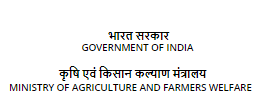Sugarcane Variety Karan 2 (Co 0118)
Problem Description:
Sugarcane, an important cash crop of India, supports the livelihood of 35 million farmers,
15 million agricultural labourers, five lakh skilled and semi-skilled workers. The sub-tropical region of India, was known for its low sugarcane production, productivity and sugar recovery. The subtropical region is having low sugarcane production due to low productivity (50.53 t/ha in the sub-tropical States vs. 71.67 t/ha in tropical States) and low sugar output is due to low sugar recovery (8.8% vs. 9.9%) both of which could be attributed to extremes of weather prevailing in the region. From Sugarcane variety which can withstand the vagaries of sub-tropical climate was the felt need. Cane crushing in the subtropical states starts generally from October-November. The popular varieties of this region like CoS 767, CoSe 92423, CoS 8436,
CoS 88230 etc. do not attain sucrose maturity until mid-season of crushing (Dec-Jan). The high sugared early maturing variety CoJ 64, released during 1976, has made significant contribution in terms of improvement in sugar recovery (8.53 to 10.14%) and sugar yield (4.58 to 5.17 t/ha) in Punjab. But the glory of CoJ 64 has diminished gradually in the region owing to its susceptibility to red rot.
Therefore, to realize a better sugar recovery of around 11-12% a need for an early maturing variety comparable or better than CoJ 64 in yield and juice quality and combined with red rot resistant gene(s) was felt. The negative relationship between the sugar recovery and cane yield, thus appeared to be the major bottleneck in sugarcane breeding. The challenge in 1990 was to evolve a high sugared, high yielding and early maturing red rot resistant variety (as a substitute for CoJ 64) befit to the sub-tropical weather by breaking the negative linkage between high yield and high sugar.
Solution Description:
Based on many studies conducted in tropical and subtropical regions (Coimbatore and Karnal) it was concluded (by the PI) that early selection during October in seedling ratoon nursery is more efficient in identifying better quality clones for early season crushing. Hence, suitable changes were made in selection procedure at ICAR-Sugarcane Breeding Institute, Regional Centre, Karnal. (i) It was decided to practice selection in seedling ratoon nursery instead of old practice of selecting in seedling (plant) nursery. (ii) Seedlings in ratoon nursery were scored for NMC, stalk diameter, stalk length and HR Brix during October. (iii) Selection during early in the season, i.e. in October instead of February-March as was practiced earlier.
Adoption of above modified selection procedure has led to the development and release of six early maturing high sugared varieties namely, Co 98014, Co 0118, Co 0237, Co 0238, Co 0239, Co 05009 and 6 midlate varieties Co 0124, Co 05011, Co 06034, Co 09022, Co 12029 and Co 13035 for commercial cultivation in the North West Zone (NWZ) of India through CVRC. These varieties have occupied more than 2.76 million hectare area in North India during 2019-20 season.
Co 0118, though a better variety for juice quality than the varieties Co 0238 but was less preferred by farmers due to comparatively lesser cane yield. Hence, rate of increase in area is slow. However, its area is steadily on the rise since 2016 onwards and most of the sugar mills are recommending Co 0118 as the second variety in their areas.


